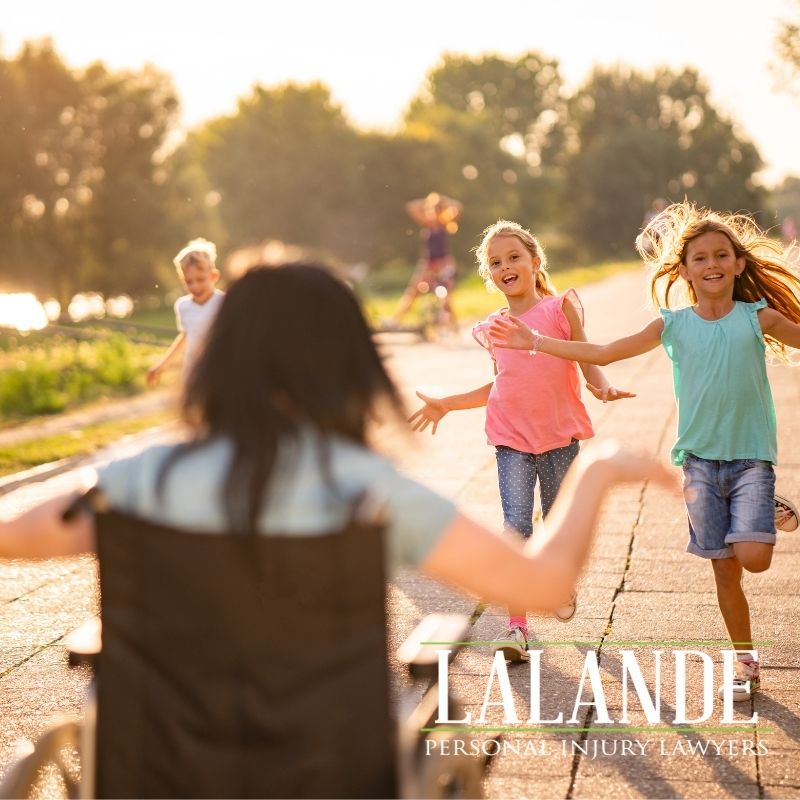By Matt Lalande in Pedeatric Injuries on February 09, 2018

Are property owners held to a greater standard of care if kids are on their premises? Is there a greater duty to care for child safety than adults in occupier’s liability cases?
The answer is of course. There is no doubt that kids are often both careless and courageous because they simply don’t have a proper understanding of the risk of injury. It is completely foreseeable that they will engage in actions and activities that adults would not.
Kids tend to disregard hazards simply because they are not mature enough to understand foreseeable consequences of impulsive decisions. They do not have a full appreciation of the dangers and injuries, especially when compared to adults.
Occupiers’ Liability Act
The Occupiers’ Liability Act of Ontario is a law that mandates that property owners need to take reasonable safety precautions for attendees—including kids. This is the law that lawyers use as the legal foundation to argue property injury cases. The act, however, does not devote any particular section solely to children.
Instead, the Occupiers’ Liability Act is clear that occupiers (homeowners, resorts, shopping malls, airports, parking lot owners, buildings, etc.) must take reasonable care to take care of their property. What constitutes reasonable care will be very specific to each situation.
When considering the liability of property owners and children, we must ask whether there was a foreseeable risk of harm or foreseeability of danger. What safeguards were taken to protect the injured child? What precautions were made to protect children on your property? Was the danger and injury that the child faced foreseeable to the occupier?
An Example
Consider the case of Walker v. Sheffield Bronze Powder Company. In this case, two brothers, aged eight and nine, walked onto the defendant’s premises on a Saturday afternoon when the business was closed. The defendant stored empty barrels against the walls of its building. The barrels were used for chemical transportation and delivery. The chemicals were flammable. It was not possible to empty the barrels completely.
One of the brothers lit a match close to or in the hole of a barrel and sparked a flash fire with a near immediate explosion. Both boys were severely burned. Important to this case was that there was a recreational park near the building. The judge found that it was obvious that the children from the park would be inclined to play around the buildings of the defendant.
There was no fencing, nor were there even any warning signs or trespassing signs posted around the property. The judge found the company 100 percent liable. The company knew the barrels were flammable and potentially explosive. It was foreseeable that children who would play around the park would wander around the property, play around the barrels, and try to investigate its contents.
The company could have easily eliminated this risk through interior storage or by erecting a fence around the property, given that the contents of the barrels were flammable. The safeguarding of potential children from hazard would have been very simple.
In another case, Teno v. Arnold, an ice-cream truck drove into a residential neighbourhood. A four-year-old boy bought some ice cream, walked in front of the truck, and was run over. He suffered very serious injuries.
In this case, the court held that the design of the vehicle, its appearance, and the appearance of products dispensed (ice cream) were all carefully calculated to attract small children to purchase the products dispensed from that vehicle. This was called “doctrine of allurement.”
Similarly, there have been cases where children have fallen down the stairs in caregivers’ homes and the occupiers were found liable for not having proper safety gates in the stairwell. If you are accepting money to watch children, you should take the proper safety precautions to protect the children while they are in your home.
There have been many cases across Ontario involving daycares, nannies, or caregivers not providing enough food and water for children under their care or failing to follow basic safety protocols for babies and young children. There have been many documented cases of violence, malnutrition, and choking. There have been several cases over the past few years involving homes or regulated daycares that violated the terms of their registration by accommodating many more children than the legal limit.
Similarly, there have also been many cases involving children drownings at hotels, resorts, and residential homes due to negligent supervision (e.g., leaving doors and fences unlocked).
The presence of young children presents unique difficulties for homeowners and hotels. The occupier of the premises, hotel, or resort must meet a standard of reasonableness in protecting its visitors from harm. This standard is not one of perfection—but when children are involved, there is no doubt that extra care must be taken. These individuals and entities must take additional steps to install a lock or place a secure barrier around a pool to keep children out and ensure that they cannot gain access to use the pool without adult supervision.
In short, property owners may have a greater duty of care because of enhanced foreseeability (i.e., kids will do things unexpectedly and without a full appreciation of risk, and we should all be aware of this). If your child has been injured on someone else’s property, please call Lalande Personal Injury Lawyers. Our consultations are free, and we will never ask you for money upfront. We would be happy to explain the rights your child may have with no obligation to you. Please contact us by completing a contact form at the bottom of this page or by calling us at 905-333-8888 today.